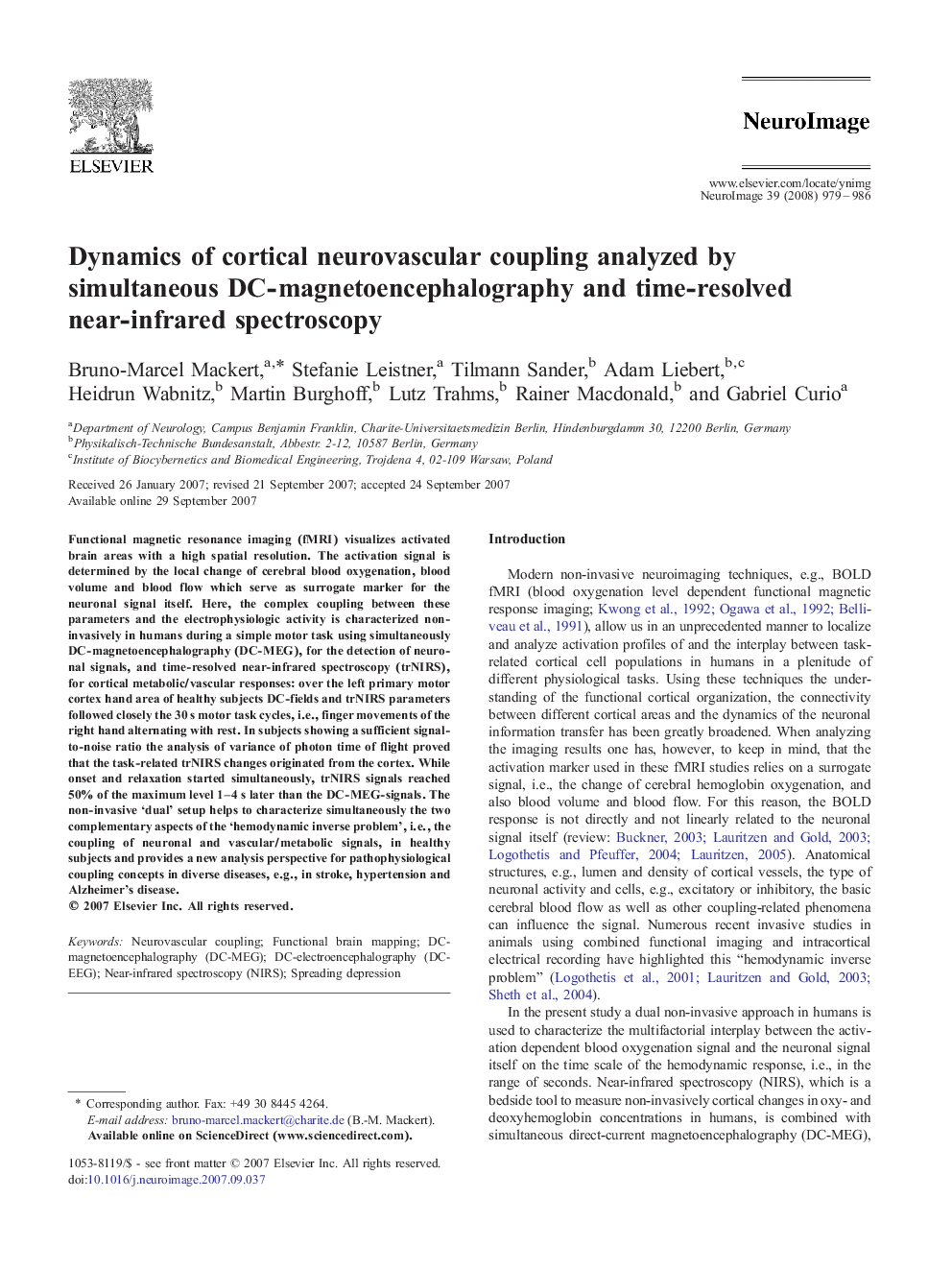| Article ID | Journal | Published Year | Pages | File Type |
|---|---|---|---|---|
| 6039976 | NeuroImage | 2008 | 8 Pages |
Abstract
Functional magnetic resonance imaging (fMRI) visualizes activated brain areas with a high spatial resolution. The activation signal is determined by the local change of cerebral blood oxygenation, blood volume and blood flow which serve as surrogate marker for the neuronal signal itself. Here, the complex coupling between these parameters and the electrophysiologic activity is characterized non-invasively in humans during a simple motor task using simultaneously DC-magnetoencephalography (DC-MEG), for the detection of neuronal signals, and time-resolved near-infrared spectroscopy (trNIRS), for cortical metabolic/vascular responses: over the left primary motor cortex hand area of healthy subjects DC-fields and trNIRS parameters followed closely the 30 s motor task cycles, i.e., finger movements of the right hand alternating with rest. In subjects showing a sufficient signal-to-noise ratio the analysis of variance of photon time of flight proved that the task-related trNIRS changes originated from the cortex. While onset and relaxation started simultaneously, trNIRS signals reached 50% of the maximum level 1-4 s later than the DC-MEG-signals. The non-invasive 'dual' setup helps to characterize simultaneously the two complementary aspects of the 'hemodynamic inverse problem', i.e., the coupling of neuronal and vascular/metabolic signals, in healthy subjects and provides a new analysis perspective for pathophysiological coupling concepts in diverse diseases, e.g., in stroke, hypertension and Alzheimer's disease.
Keywords
Related Topics
Life Sciences
Neuroscience
Cognitive Neuroscience
Authors
Bruno-Marcel Mackert, Stefanie Leistner, Tilmann Sander, Adam Liebert, Heidrun Wabnitz, Martin Burghoff, Lutz Trahms, Rainer Macdonald, Gabriel Curio,
